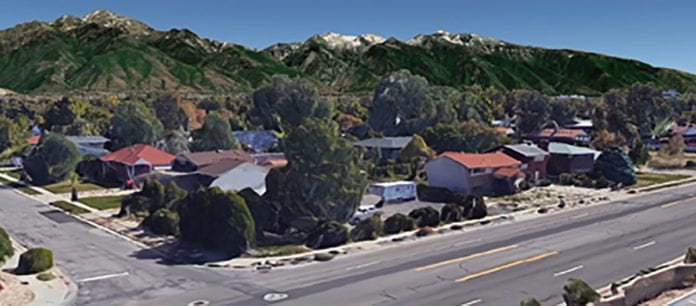Spoiler Alert: Obstructions.
Ask anyone you meet how they feel about their current broadband service, and you’ll usually get an earful of complaints. Except for the rare few who have been blessed with fiber to their homes or facilities, the most common issue — and the biggest strategic problem for their service providers’ network teams — is bandwidth. Aging copper broadband infrastructure throughout the developed world, whether twisted pair or coax, simply cannot deliver (at practical distances) the peak speeds and sustained capacity everyone wants for 4K entertainment, immersive online gaming experiences, video presence, cloud apps, remote work, and so on. If you’re one of those frustrated by poor broadband speeds, you can take some comfort from knowing that you’re far from alone: straightforward analysis of Akamai’s State of the Internet reports and ITU data indicates roughly 700 million households worldwide are in this same boat today.
The prohibitively high cost of fiber-based solutions to this widespread problem has prompted renewed interest in wireless options for consumer and business broadband. Witness the prominence of the fixed access use case in ongoing work on 5G. It’s widely expected that fixed wireless access will figure prominently in service provider network-upgrade plans as the world moves toward gigabit throughput and new 5G services. Exciting headline reports from limited trial activity for pre-5G fixed wireless equipment under narrow and carefully-controlled circumstances has undoubtedly fueled these expectations.
The problem: obstructions
Access-industry veterans have seen and participated in a variety of attempts at wireless fixed broadband access over the years, and they know several key challenges must be overcome for new wireless solutions to meet the real-world demands of gigabit access in the general copper-replacement case. Many of these challenges — spectral efficiency, interference management, continuous adaptation to changing conditions, uniform service delivery throughout coverage areas, and stable, deterministic performance — follow directly from the first and most prominent issue on the list: obstructions. (This article focuses on just this most fundamental issue — addressing that along with the rest of the challenges above thoroughly all in one piece would certainly spill over the boundaries of this format.)
A crowded field of outdoor wireless equipment vendors targeting discrete high-bandwidth point-to-point or -multipoint applications offers plenty of evidence that achieving high performance and low cost in radio links that have clear, interference-free line of sight (LoS) between endpoints is now a straightforward product engineering and network implementation task. The introduction of obstructions such as buildings, trees, passing vehicles, and terrain features in the line of sight for a desired fixed access connection, however, creates many signal-quality and performance issues for conventional radios. In fact, that the advice of most experienced outdoor radio engineers to date has been simple: don’t even try without LoS.
A unique study of obstruction prevalence in residential applications
Given the potential show-stopper nature of this problem, it’s natural to ask, as one of Tarana’s key service provider customers[a] did recently, how important is this obstructions issue in real-world residential neighborhoods? Really? How often is LoS typically available in a practical deployment scenario?
That’s a simple and reasonable question, but not one with a ready answer until now. It turns out that since the vast majority of rigorous, empirical channel characterization work in outdoor wireless to date focuses on the handheld mobile use case, there wasn’t anything available on the industry’s shelf that answers this question in any representative and an actionable way for fixed access. So the Tarana team, on a tight deadline to move a critical phase of network design collaboration forward with this key customer, was pressed to construct from scratch a straightforward but statistically meaningful fact base for this work, in the general context of broadband access in the US and Europe.
Tarana’s Residential LoS Availability study took the industry’s first careful look at the fixed wireless access obstruction challenges in residential neighborhoods. The study involved a random selection of a representative sample of 35 residential neighborhoods (20 in the US, 15 in Europe, (Figure 1), construction in Google Earth of a virtual 500m sector of wireless access coverage in each (a minimum practical sector size as determined by extensive deployment economics modeling with this customer — (Figure 2), and then detailed visual analysis of the availability of line of sight to the occupied structures in each sector from the base station’s vantage point (Figure 3). The analysis used Google Earth’s well-calibrated 3D building and foliage data, evaluating LoS availability as a function of base station height and support for fixed-access customer premises equipment (CPE) deployment modes in windows, on eaves, or on rooftops. The study included 8,219 occupied structures in the 35 neighborhoods and 3,736 individual observations of LoS across the 3 CPE installation modes.
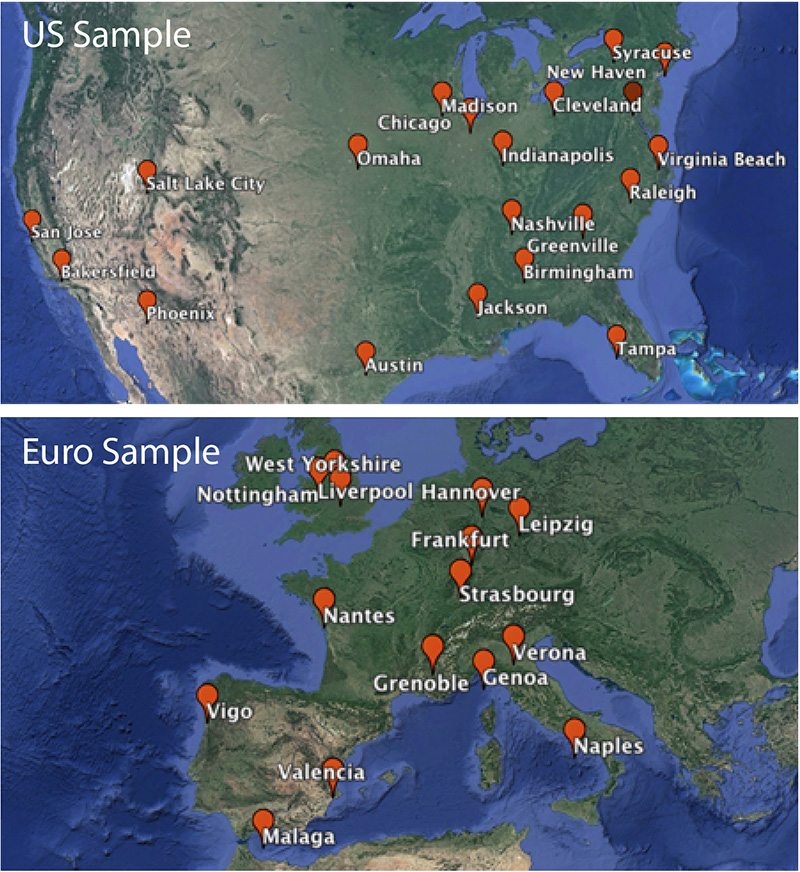
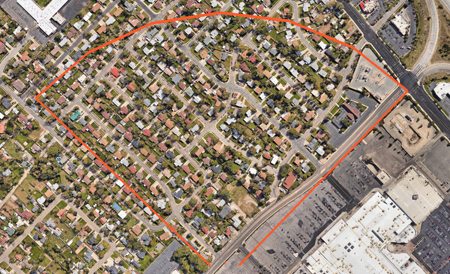
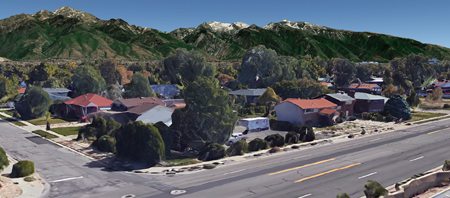
Study results
As shown in Figures 4 and 5, the aggregate observations indicate insufficient LoS availability, especially in the most common and practical deployment scenarios in the US — i.e., neighborhoods dominated by single-family dwellings, with no rooftop mounting of CPE, and modest base station height. The higher average building density in the sample for Europe (295 per sector v. 173 in the US) created modestly more LoS-favorable conditions, as the higher density tended to crowd out large trees more than in the US. But links remained by far the minority of cases in the 500m sector because of the persistence of building- and terrain-based obstructions.
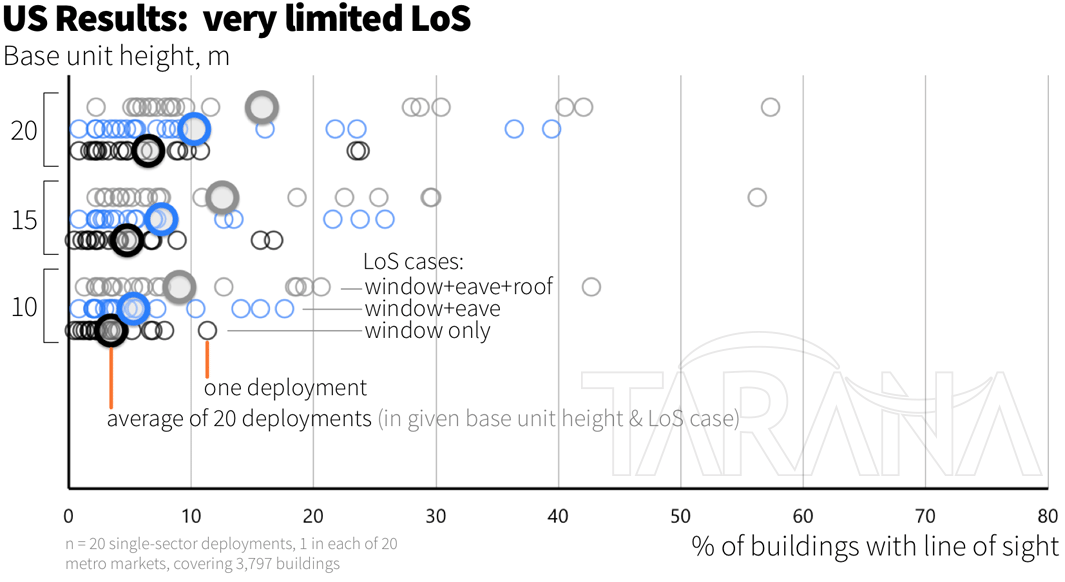
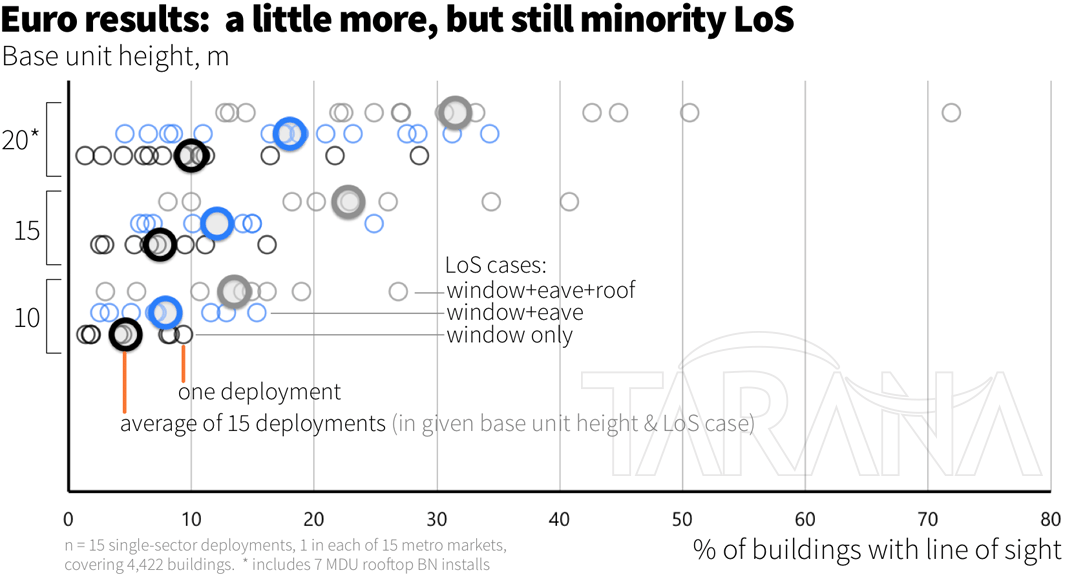
Implications
The scarcity of LoS in practical terms has profound implications for the deployment economics of wireless solutions. Either they are working in spectrum where reflection and diffraction effects suffer from heavy signal attenuation, or they are poorly equipped to leverage reflections and diffractions without undue counterproductive effects from self- and unmanaged-interference and disturbance from motion in the channel — or both. The facts on the ground suggest operators developing strategies for large-scale wireless replacement of copper in order to provide gigabit residential access service must evaluate very carefully the real-world non-LoS performance of the options they are considering, which can vary widely as a function of system architecture and radio intelligence. Practical deployment economics will, therefore, vary equally widely and make or break the business case for a given wireless alternative. If the industry is to help the majority of those 700 million households out of their bandwidth-challenged boat, it’s critical that we get our approach to working around obstructions right.
Notes:
[a] Name withheld because of confidentiality agreement.

